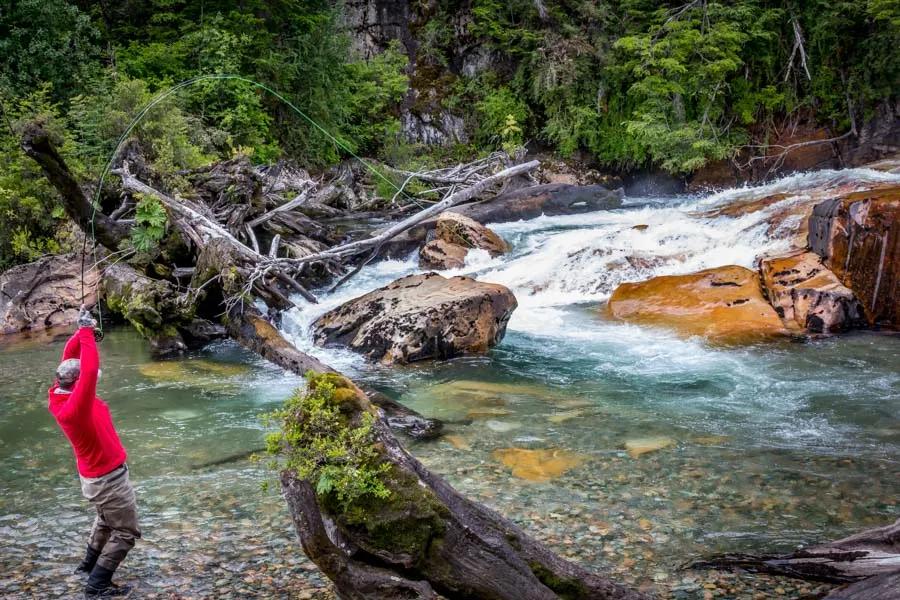
Whether you've been fly fishing in Montana your entire life or just fished your first day of fly fishing in Montana, chances are very good that you experienced fishing a dry-dropper rig. Naturally, fishing two flies increases your chances of catching more fish and many of us like to see a trout rise to a dry fly. Fishing a dry fly with a nymph tied to it is the standard dry-dropper rig and is now a proven tactic to catch more fish. But, like many things in fly fishing there are optimal times to use a dry-dropper rig and times when not to fish a dry-dropper rig.
One of the most common techniques in trout fishing is the dry dropper technique. Also, known as a "Dry-Dropper" set up. This technique is effective because it enables the angler to ‘fish’ flies in two feeding zones: one fly on the surface river, and one fly below the surface. This sounds very simple, but there are a few tips for increasing the effectiveness of the dry-dropper technique. Here is some advice learned from our Montana fly fishing guides.
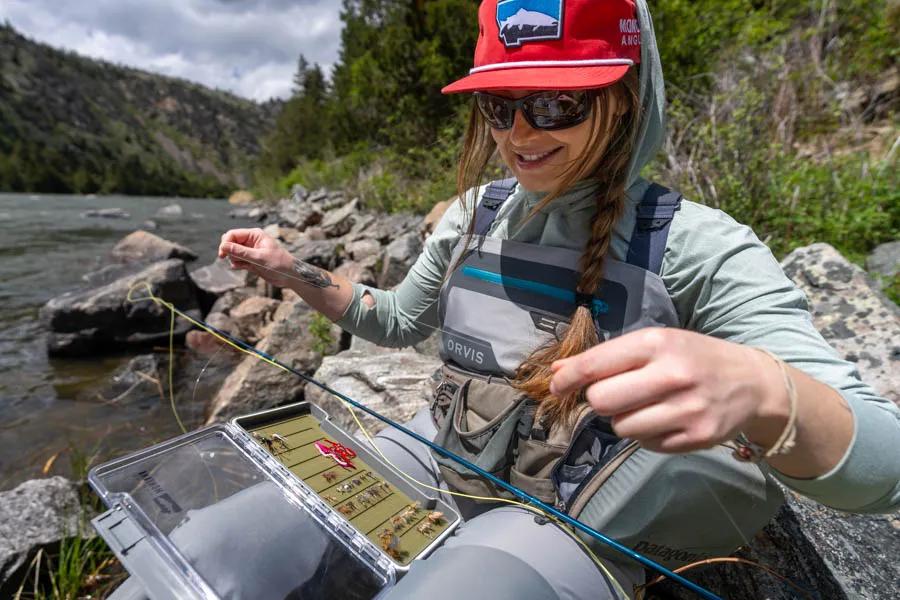
When to Fish a Dry-Dropper Rig
Fishing a dry-dropper rig can be very effective any day of the angling year. Most fly fishing guides opt for a dry-dropper rig before or during a hatch or when prospecting for trout during non-hatch times. Before a hatch a dry-dropper rig is very effective because the dropper fly can imitate the emerging insects or the active nymphs. The dry fly, also called the top fly, imitates the hatched insect on the surface of the water. When a hatch isn't prevalent due to time of day or time of year, many local guides prospect with a dry-dropper. This can be quite effective in late summer or early fall when grasshoppers, ants, or beetles might land in the water. Prospecting with a dry-dropper rig is also effective before, during, and after a large hatch of stoneflies.
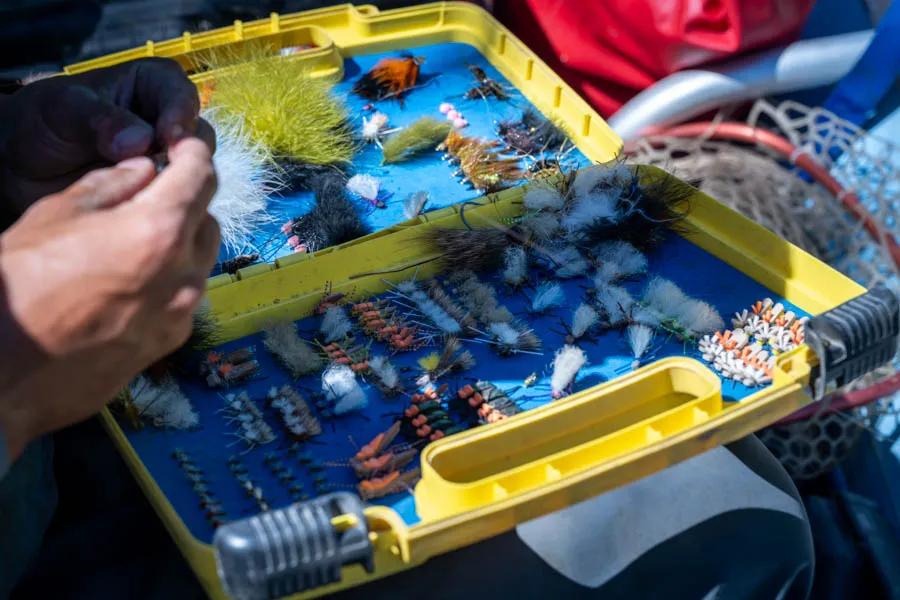
Choosing the Right Type of Top Fly
The most important component in a dry-dropper rig is the top fly. Because the top fly floats, it is what you see and because you cannot see the dropper fly, the top fly also acts as a de-facto strike indicator. In most instances choose a top fly that is tied to float high on the surface and for a long time. Materials like foam, elk hair, poly or widow's web are all key components of a good top fly in a dry-dropper rig. It is also crucial to pick your top fly based on if a hatch is occurring or if you need to choose an attractor type pattern. During strong mayfly emergences choose a Parachute Adams or an extended body foam pattern and for caddis a Bloom Hi-Vis or a Neversink Caddis. To prospect with a dry-dropper rig, choose any of the various attractor style foam-bodied or high-floating patterns such as a Chubby Chernobyl or Parachute PMX.
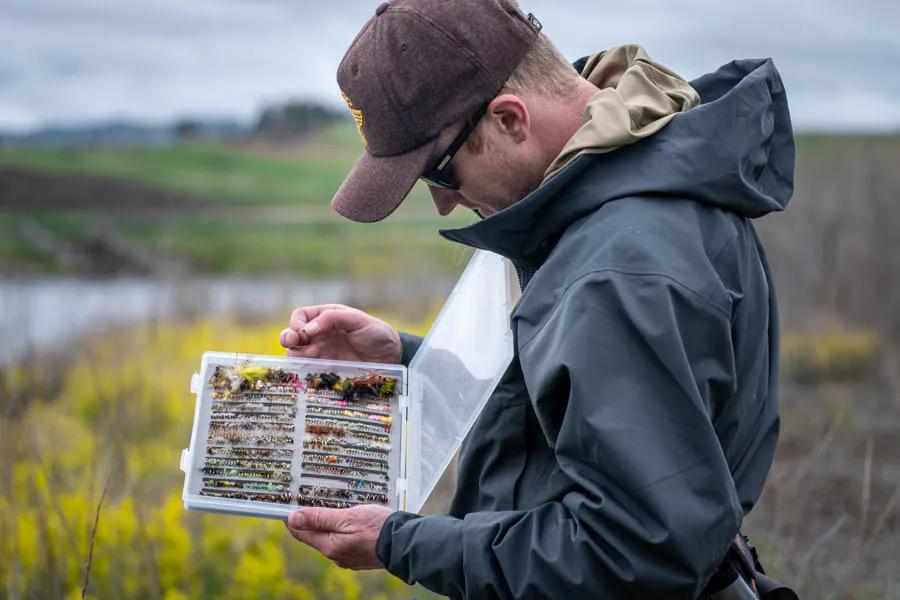
Micro and Small Fly Dry-Dropper Fishing
When most folks think of dry-dropper fishing, large flies and heavy nymphs come to mind. However, dry-dropper rigs can be very effective in small fly situations. This is often the case on the technical waters like Montana's spring creeks and certain times on other rivers when trout are feeding on emerging mayflies or hatches of midges. When trout become selective and feed on a specific insect or stage of an insect's lifecycle, fishing two flies allows you to fish a small top fly that you can see and then a dropper fly that is either so small it is hard to see or will float in the surface film or just under the surface. The top fly allows you to successfully fish a very small emerging pattern.
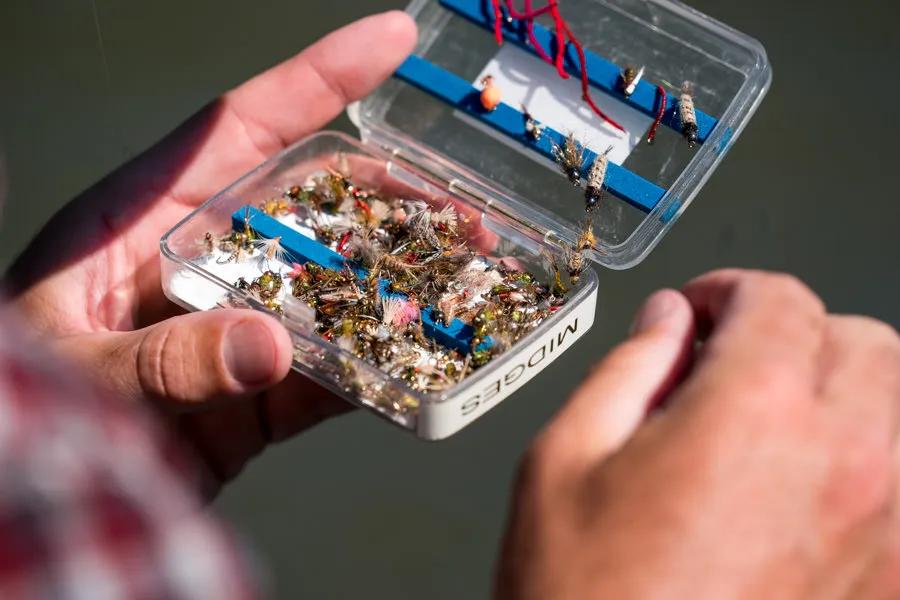
Choosing the Right Type of Dropper Fly
If the most important component of a dry-dropper rig is the top fly, then naturally the second most important part must be the dropper fly. The type of dropper to choose is based on a variety of factors. The factors include: water depth, speed of current, and quantity and type of hatch. If fishing deep or fast water use a heavy dropper. If the current is fast but not very deep, use a dropper that is still heavy enough to get down in the fast currents. If a strong hatch is coming off be sure to choose a dropper that matches the hatch. On a spring creek or tailwater river like the Missouri River where trout can often sip emerging insects be sure to choose a dropper that will float at the proper depth, which can sometimes be in the surface film and not fully submerged.
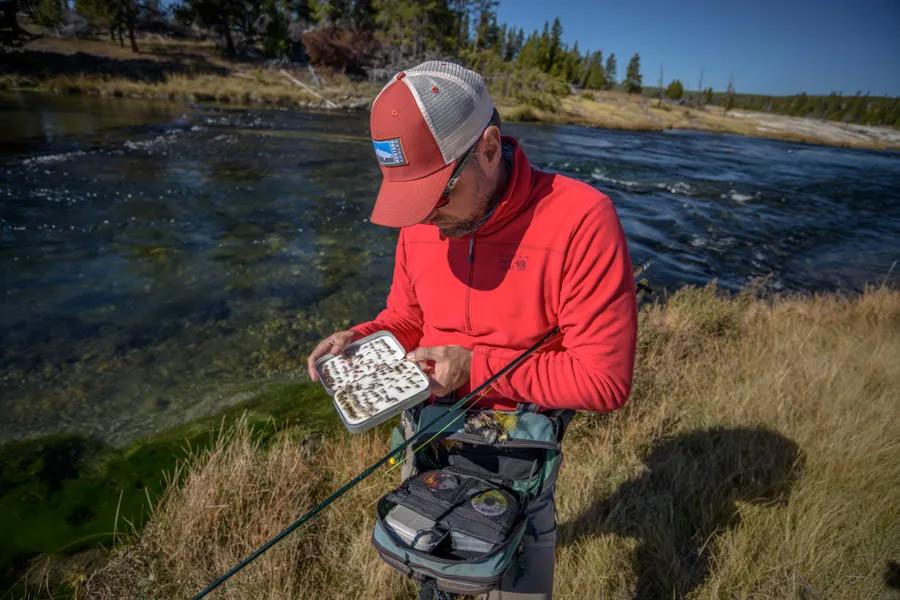
Adjust, Adjust, and Adjust Some More
When fishing a dry-dropper rig it is important to keep your mindset flexible and always be ready to adjust. This is especially true with the dropper fly. Experienced Montana fly fishing guides are constantly adjusting the depth that the dropper fly is running. Because you cannot see where the fish are feeding--you can, and should, make an educated guess--but until you are regularly getting strikes, be willing to adjust the depth that the dropper fly is fishing. If you are getting strikes, leave the rig as is. But if you are not getting strikes run your dropper a little deeper or change the fly. If you are hitting the bottom a lot, shorten the depth or consider fishing a lighter fly if you are convinced you are fishing the right fly.
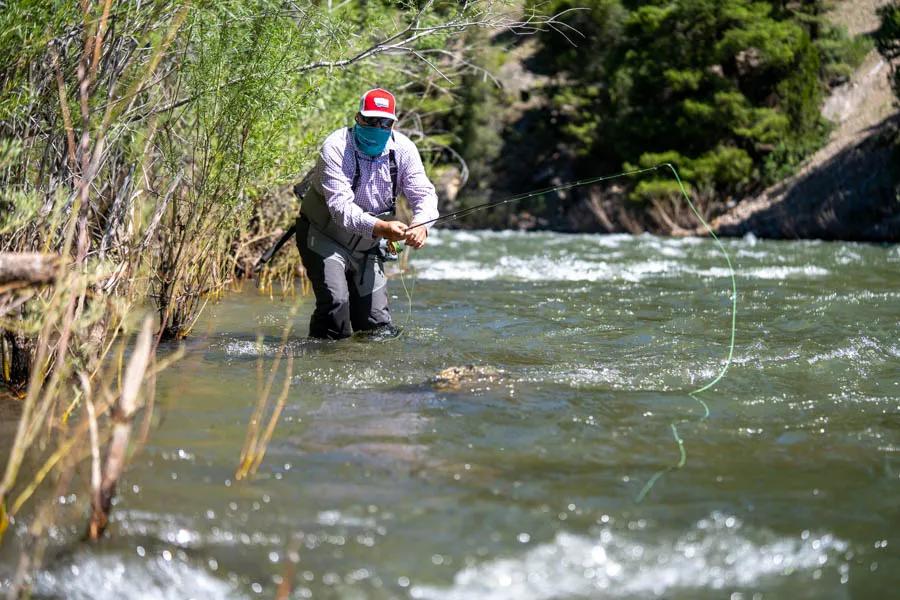
When NOT to Fish a Dry-Dropper Rig
Many experienced guides immediately rig dry-dropper rigs when they start fishing. The one-two punch increases the odds of catching fish. But there is a time when that second fly can hurt your chances more than it can help. You may want to fish a single dry fly if you are fishing a salmonfly hatch during high water when accurate casts are crucial. When casting a dry-dropper rig sometimes the dropper tippet makes it difficult to land the dry fly in a tight space along a fast bank or pocket amongst structure. You will find that cutting off the dropper tippet can result in more hook-ups because the single dry fly can land in a better spot and also get a better, and longer drift. Another instance where a single dry fly is better than a dropper can be during a strong hatch. If trout are rising to hatched adult insects on the surface of the water and a perfect drift is crucial, fishing a single dry fly will result in a better drift. This occurs often on the tailwaters like the Missouri River where trout often pod up in seams. With fishing in a myriad of currents, a dropper tippet can cause the top fly to float erratic this is often the case on spring creeks and tailwaters.
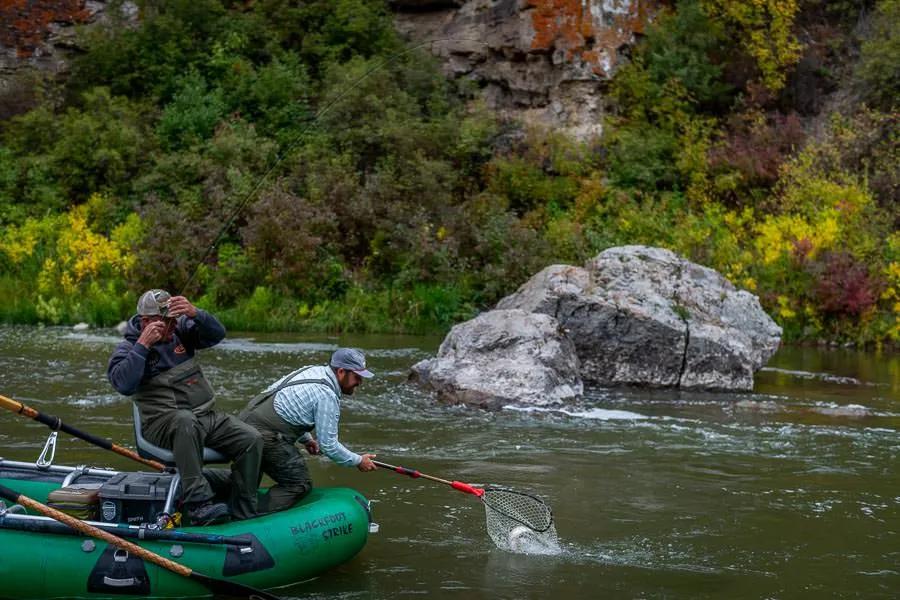
Fly fishing is a visual sport, but much of the action takes place below the surface. By fishing a dry-dropper rig you can still enjoy the visual excitement of seeing a fish eat on the surface or detect a strike as the top fly moves, but the submerged dropper gives you extra odds because a good portion of a trout's feeding occurs below the surface.
